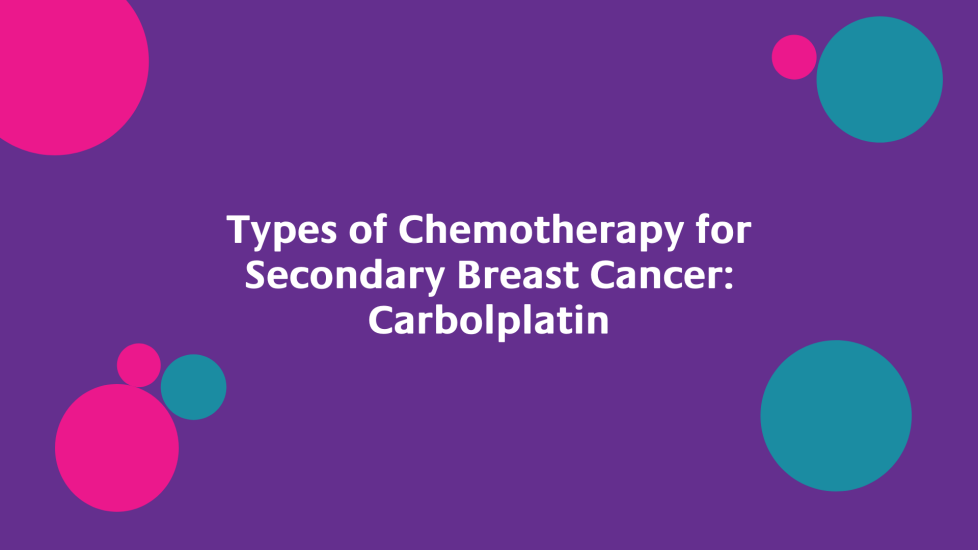5th December 2021 by Claire O'Donnell Education

We are looking at different types of chemotherapy - how you take it and possible side-effects - and then hearing from a patient about their experience. This week it’s Carboplatin.
What is Carboplatin?
Carboplatin is a chemotherapy treatment for many different types of cancer. You can have carboplatin by itself or in combination with other chemotherapy drugs depending on the type of cancer you have.
Carboplatin interferes with the development of the genetic material in a cell, the DNA. This stops it from dividing into 2 new cells and kills it.
How do you take it?
You have this drug in your bloodstream.
You have the treatment through a drip into your arm or hand. A nurse puts a small tube (a cannula) into one of your veins and connects the drip to it.
You might need a central line. This is a long plastic tube that gives the drugs into a large vein, either in your chest or through a vein in your arm. It stays in while you’re having treatment.
You usually have chemotherapy as a course of several cycles of treatment. For example, you might have carboplatin every 3 to 4 weeks - each 3 or 4 week period is a cycle of treatment. You might have between 4 to 6 cycles. How often you have it depends on your type of cancer.
Each treatment takes about an hour and you have blood tests before and during your treatment to check your levels of blood cells and other substances in the blood. They also check how well your liver and kidneys are working.
What are the side effects?
Side effects will vary per person but here is a list of the most common ones:
Increased risk of getting an infection is due to a drop in white blood cells. Symptoms include a change in temperature, aching muscles, headaches, feeling cold and shivery and generally unwell. You might have other symptoms depending on where the infection is.
You might be breathless and look pale due to a drop in red blood cells. This is called anaemia.
This is due to a drop in the number of platelets in your blood. These blood cells help the blood to clot when we cut ourselves. You may have nosebleeds or bleeding gums after brushing your teeth. Or you may have lots of tiny red spots or bruises on your arms or legs (known as petechiae).
Tiredness and weakness (fatigue) can happen during and after treatment - doing gentle exercises each day can keep your energy up. Don't push yourself, rest when you start to feel tired and ask others for help.
Feeling or being sick is usually well controlled with anti sickness medicines. Avoiding fatty or fried foods, eating small meals and snacks, drinking plenty of water, and relaxation techniques can all help.
It is important to take anti sickness medicines as prescribed even if you don’t feel sick. It is easier to prevent sickness rather than treating it once it has started.
Please always consult your medical team if you experience any of these side effects.